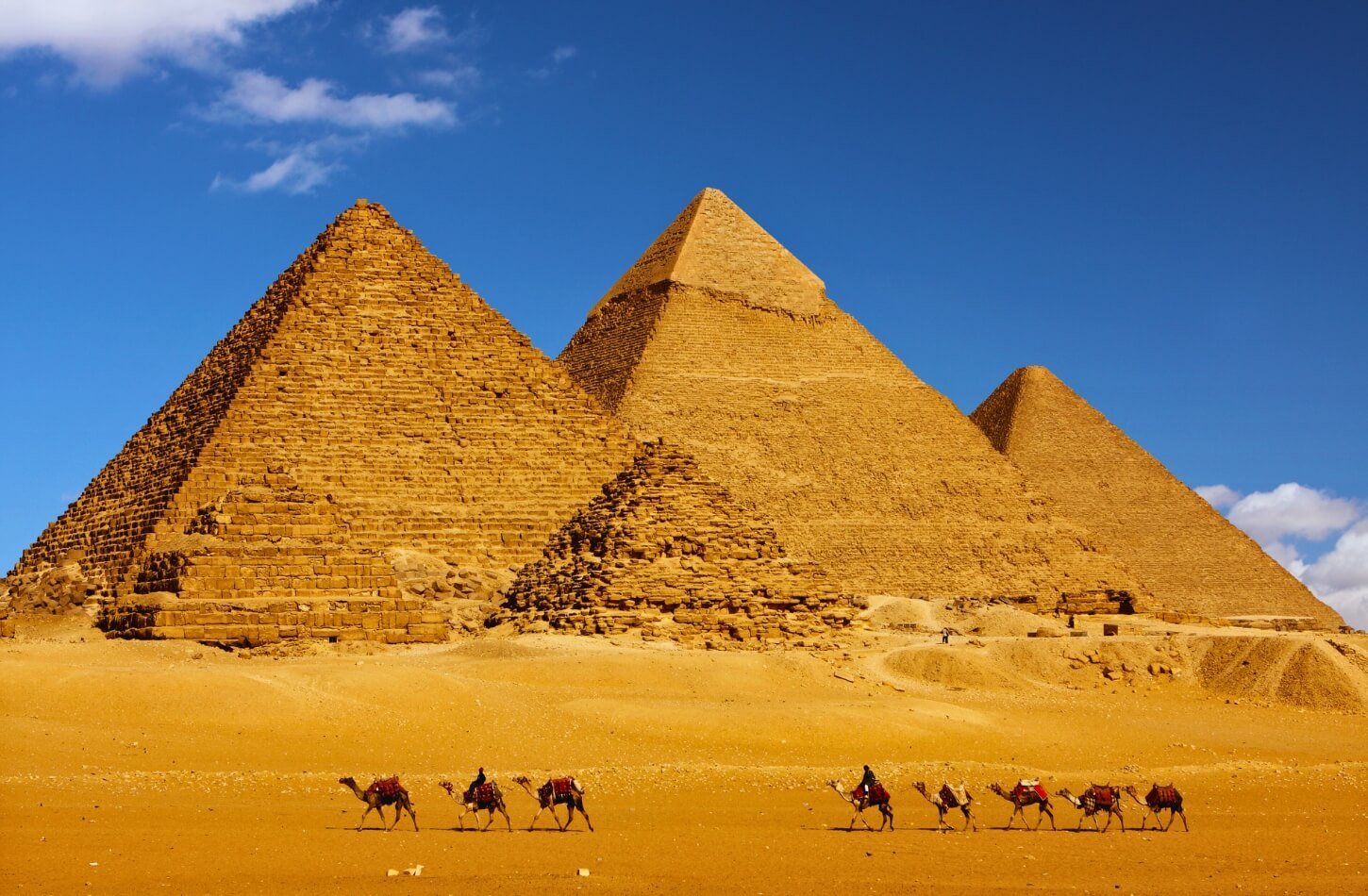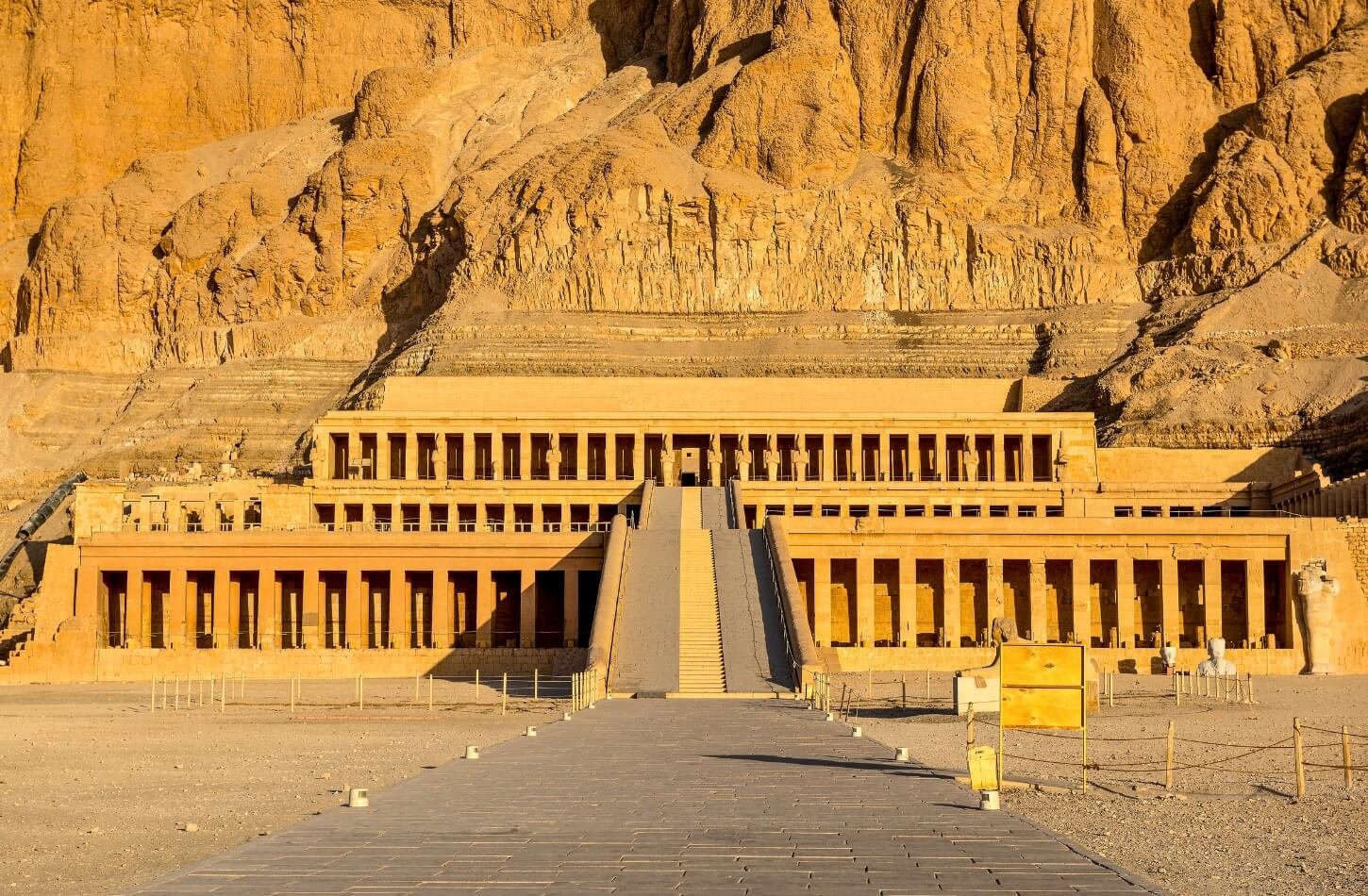Located on the west bank of the Nile River, about 230 km southwest of Aswan in Nubia, lies a monumental testament to Ancient Egyptian architecture. You’re about to embark on a journey to discover the grandeur of a UNESCO World Heritage Site. It has captivated travelers and historians alike.
These magnificent structures not only showcase the engineering prowess of a bygone era but also tell the story of a rich cultural heritage. As you explore the intricacies of this archaeological wonder, you’ll uncover the significance of its location and the historical context. This makes it a must-visit destination in Egypt.
Overview of Abu Simbel Temples
When you enter the Abu Simbel Temples, you feel like you’ve traveled back in time. It’s the era of Pharaoh Ramesses II. These temples show off ancient Egypt’s greatness and engineering skills.
The temples were built from 1264 BCE to 1244 BCE. This was during Pharaoh Ramesses II‘s rule. They were carved into the sandstone mountainside, showing the ancient Egyptians’ advanced skills.
The complex has two main temples. The Temple of Ramesses II is for gods Amun and Ra-Horakhty, and Ramesses II. Its facade has four huge statues of Ramesses II, over 65 feet tall.
The Temple of Hathor and Nefertari is for goddess Hathor and Nefertari, Ramesses II‘s wife. It’s a stunning example of ancient Egyptian art and architecture. Its facade has six statues, with four of Ramesses II and two of Nefertari.
These temples are important for their history and architecture. They also give us a peek into ancient Egypt’s culture during Pharaoh Ramesses II‘s time. The temples’ carvings and hieroglyphics show scenes from Egyptian myths and Ramesses II‘s life.
How to Get to Abu Simbel
Abu Simbel is a remote site in southern Egypt. It’s famous for its huge rock-cut temples. You can fly into Abu Simbel Airport or take a guided tour from cities like Cairo.
The drive from Aswan takes about three hours. You’ll see the Egyptian desert along the way. Or, you can take a guided tour for an easy trip.
Planning is important for a good trip to Abu Simbel. It makes your journey smooth and fun.
Best Time to Visit Abu Simbel
Planning your visit to Abu Simbel is key. You want a comfortable and fun trip. The best time to visit depends on the weather and tourist season.
The peak tourist season in Egypt is from October to February. The weather is cooler and nicer. This is a great time to see Abu Simbel Temples without the hot desert sun.
Factors to Consider
Think about these when planning your trip:
- Weather: Stay away from June to August. It’s very hot.
- Tourist Season: October to February is nice but busy.
- Sunrise and Sunset: Early morning or late afternoon is best. You get great views and it’s not too hot.
Visiting in the shoulder season (March to May or September to November) is a good choice. It’s not too hot and there are fewer people. The best time to visit Abu Simbel Temples is when you find the right balance of weather and crowd.
By choosing the best time, you’ll have a better trip. You’ll make memories that last a lifetime at this amazing site in Egypt.
Exploring the Great Temple of Ramses II
The Great Temple of Ramses II is carved into the mountainside. It shows the greatness of Pharaoh Ramesses II‘s rule. This huge temple is famous for its four giant statues of Ramesses II, each over 65 feet tall.
The temple’s front is amazing, with huge statues at the entrance. Ancient Egyptian architecture is all over, with detailed carvings and hieroglyphics. These tell stories of Ramesses II’s victories and his connection to the gods.
Key Features of the Great Temple
The inside of the Temple of Ramesses II is also impressive. It has many halls and chambers leading to the heart of the temple. Here, you can see:
- The four huge seated statues of Ramesses II, showing his power and divinity.
- Wall carvings that tell the story of the Battle of Kadesh and other key moments of Ramesses II’s rule.
- The innermost sanctum, where statues of gods Ptah, Amun, and Ra-Horakhty are, along with Ramesses II, showing his godhood.
While exploring the temple, look closely at the hieroglyphics. They tell a lot about history. The Temple of Ramesses II is not just a wonder of architecture. It’s a peek into Ancient Egypt’s past, showing us about their beliefs, wars, and culture.
The Temple of Hathor: A Closer Look
As you enter the Temple of Hathor, you feel a calm presence. Nefertari, Ramses II’s wife, and the goddess Hathor are there. This temple shows how important Nefertari was in Ancient Egyptian history.
The Temple of Hathor honors Hathor and Nefertari. It has statues of the queen and Ramses II. This shows Nefertari’s big role during Ramses II’s time. The temple’s design shows the ancient Egyptians’ skill, with detailed carvings and statues that last.
Key Features of the Temple of Hathor
Some key features of the Temple of Hathor are:
- Statues of Nefertari and Hathor: The temple has many statues of Nefertari with Hathor. This shows their special bond.
- Intricate Carvings: The walls have detailed carvings. They show scenes from Egyptian myths and Nefertari’s life.
- Architectural Significance: The temple’s design shows the ancient Egyptians’ skill. It’s a big historical site.
Visiting the Temple of Hathor gives a special look at Nefertari’s life. It shows her place in Ancient Egyptian society and her respect. The temple is a proof of Nefertari’s lasting impact and Ancient Egypt’s rich culture.
The Relocation of Abu Simbel
Moving the Abu Simbel Temples was a huge challenge. It needed careful planning and hard work. The temples were moved up 65 meters to avoid being lost under Lake Nasser. UNESCO, Egypt’s government, and donors from around the world helped make it happen.
The move involved breaking the temples into big blocks, some as heavy as 30 tons. Then, they were put back together at their new home. This amazing feat shows how smart people can save important cultural sites.
Essential Tips for Your Visit
Visiting Abu Simbel Temples is a once-in-a-lifetime chance. With the right prep, your trip will be unforgettable. Here are some key tips to keep in mind.
Plan Your Visit Timing
Start early for the drive from Aswan to Abu Simbel. This avoids the heat and lets you explore without rushing.
Allocate Sufficient Time
Give yourself 1-2 hours to see the temples. This time lets you enjoy the carvings, learn about history, and take great photos.
What to Expect
When you arrive, you’ll see the Great Temple of Ramses II and the Temple of Hathor. Expect a detailed tour that will deepen your understanding of the temples’ history.
Additional Tips
- Wear comfy shoes for all the walking.
- Don’t forget sun protection like hats, sunglasses, and sunscreen.
- Bring lots of water to stay hydrated.
Follow these tips to make your visit to Abu Simbel Temples special. It will be a memorable and enriching trip to Aswan.
Nearby Attractions to Explore
The area around Abu Simbel is full of history and natural wonders. It’s perfect for travelers wanting more than just one highlight. When you visit, don’t miss out on the other amazing attractions nearby.
Discovering Nearby Gems
Don’t miss the Nubian Monuments near Abu Simbel. They show the rich culture of the Nubian people. You’ll see amazing carvings and buildings.
Lake Nasser is another must-see. It’s one of the biggest man-made lakes. It’s a wonder of engineering with stunning views and activities like boating and fishing.
Aswan is also worth a visit. It’s known for its beauty and history. You can see the famous Philae Temple, moved to save it from Lake Nasser.
For adventure, try the desert around Abu Simbel. You can go on safari adventures. Enjoy camel rides and stargazing in the beautiful desert.
Whether you love history, nature, or adventure, Abu Simbel’s area has it all. It’s a place where history and nature come together, offering something for everyone.
Capturing the Perfect Photos
To capture Abu Simbel’s essence, timing and composition are crucial. The temples offer a unique backdrop for photos. Here are some tips to improve your photography.
Best Time to Visit
The early morning and late afternoon are best for photos. The soft, golden light brings out the statues’ textures and colors. It makes for amazing photos.
Composition Tips
Try different angles and perspectives to add drama. Don’t be shy to get low or climb high. This captures the temples’ grandeur.
Respect the Site
While taking photos, respect the site and others. Follow the rules to ensure a good experience for all.
By following these tips, you can improve your photography. You’ll capture Abu Simbel’s beauty.
Conclusion: The Lasting Impact of Abu Simbel
Thinking about your trip to Abu Simbel brings back its deep history and culture. This UNESCO World Heritage Site is famous worldwide. The huge temples built by Pharaoh Ramesses II amaze everyone who visits.
The temples show the skill and creativity of Ancient Egypt. Moving them was a huge effort by many people. Now, they are safe for people to see in the future.
Leaving Abu Simbel, you remember its rich history and culture. It shows us why we must keep our cultural treasures safe. This is a powerful lesson.
Abu Simbel is special for history lovers, architecture fans, or curious travelers. It shows the greatness of Pharaoh Ramesses II and Ancient Egypt. It’s a place that will stay in your heart forever.







